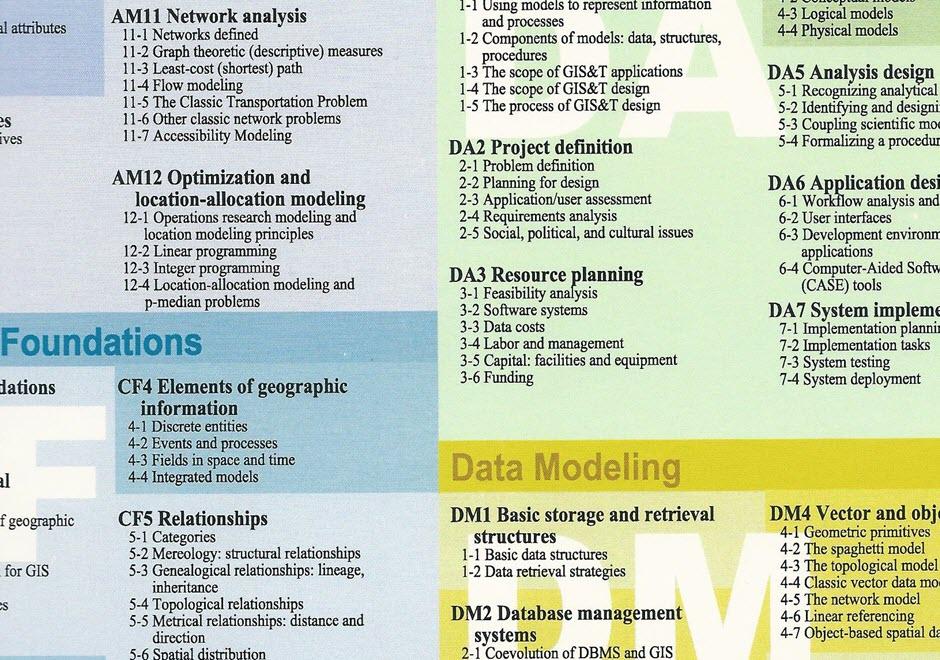FC-16 - Area and Region

- List reasons why the area of a polygon calculated in a GIS might not be the same as the real world object it describes
- Demonstrate how the area of a region calculated from a raster data set will vary by resolution and orientation
- Outline an algorithm to find the area of a polygon using the coordinates of its vertices
- Explain how variations in the calculation of area may have real world implications, such as calculating density
- Delineate regions using properties, spatial relationships, and geospatial technologies
- Exemplify regions found at different scales
- Explain the relationship between regions and categories
- Identify the kinds of phenomena commonly found at the boundaries of regions
- Explain why general-purpose regions rarely exist
- Differentiate among different types of regions, including functional, cultural, physical, administrative, and others
- Compare and contrast the opportunities and pitfalls of using regions to aggregate geographic information (e.g., census data)
- Use established analysis methods that are based on the concept of region (e.g., landscape ecology)
- Explain the nature of the Modifiable Areal Unit Problem (MAUP)


DM-43 - Approximating the geoid with spheres and ellipsoids